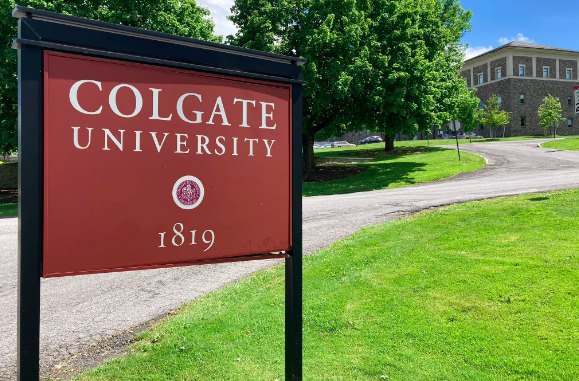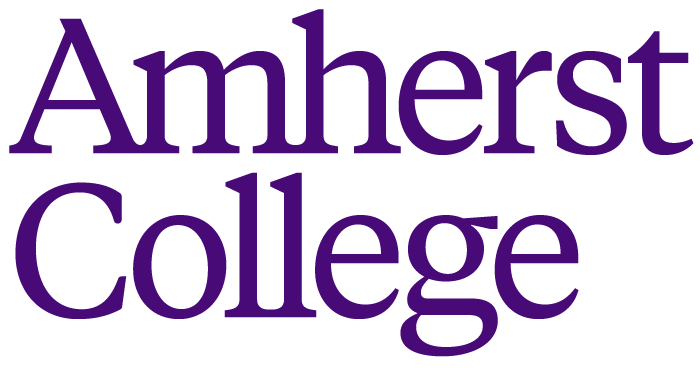Imagine a barn door that never closes. When a college practices Open Admissions the college admits all applicants with a high school diploma or GED, although some programs, such as nursing, might limit enrollment. In addition to an easy path into the college, Open Admission colleges often accept students right up until classes begin each term. Learn more about the many advantages of applying to an open admission college.
All About Early Action: Restricted/Single-Choice & Unrestricted
When you apply to a college or university Early Action you are submitting your application by a specific early deadline and will receive your decision earlier than regular decision, usually, though not always, before the end of December. Although you may be admitted early, you are not committed to enroll at that college. Yet, there are two types of Early Action:
EA Unrestricted – when you are free to apply to more than one college with “Early” plans at the same time.
EA restricted (REA) or single choice – when you are not allowed to apply to other colleges with “Early” plans at the same time (though usually with carve outs for public colleges and universities).
Always read the fine print of the admissions plan you are agreeing to before you sign and submit anything to a college or university.
AP Exams Aren’t Worth the Hype and Hysteria
Taking and doing well on Advanced Placement Exams could earn you some college credits, but they shouldn’t influence the grade you earn in your AP Classes and they rarely are factored into college admissions decisions.
Sadly, many high schools pressure students to freak out about these exams; yet, the exams themselves have limited utility to the vast majority of high school students. These exams do make the College Board and schools a lot of money.
What Needs to Change in College Admissions
The ups and downs of the quarantine gave college admissions officers and school counselors a taste of application life to come, as the birth rate for high school graduates continues to slide, and the need to develop new approaches to recruit students increases. As the profession continues to try and improve college access, and knowing that small differences can make a big difference, here are some considerations for both sides of the desk to ponder this summer over a well-deserved glass of lemonade:
Colleges—move your deadline dates. November 1 (early applications), January 1 (regular applications), and May 1 (many deposits) are all big dates in the college application world—and they all fell on a Sunday or a holiday this year. I don’t understand this, since the admissions offices weren’t open, and the vast majority of high school seniors had no access to counselors or other application helpers the day of and before the deadlines.
This needs to change. Yes, students need to be responsible, and should learn to plan ahead—but perhaps that lesson is better applied to deadlines for things they’ve done before (like papers), not with things they are doing for the first time (like applying to college). The first Tuesday in November, the second Tuesday in January, and the first Tuesday in May would solve this problem nicely, increasing the quality and quantity of applications to boot. Georgia Tech made the move, and they get kaboodles of applications. It’s an easy, but important, change.
High Schools—stop working holidays. Moving the January 1 deadline to a date when high schools are in session is also overdue for school counselors, who have taken a serious shellacking this year with all the student mental health issues arising from COVID. School counselors have always been overworked, but never able to use the December holidays to recover, since they were expected to help their students make January 1 college deadlines.
It’s time to take a stand. Assuming the colleges move their deadlines, counselors need to learn to let go. Send a note to all senior families early in November, letting them know your vacation is—well, a vacation. If you really can’t let go of your students for that long—or if the colleges unwisely cling to January 1– set two days of vacation for online office hours, and take a breath all the other days. You have mastered online office hours this year. Let them be your friend.
Colleges—keep innovating. One (and perhaps the only) upside of the quarantine was the ability of college admissions offices to adapt major chunks of their traditional approach to recruitment. Test optional, drive-thru tours, and online high school visits suggested it might be OK for everyone to get their hopes up, that some real college admissions reform was in the air.
Yes. Well.
In a post-vaccine world, we see more signs of returning to “normal” than creating new normal. Reinventing the entire admissions process is no easy feat, to be sure, but how hard might it be for admissions offices to spend half a day this summer doing “What ifs” to one part of the application process? Do that for five years, and you have a new admissions paradigm, and a more accessible one—the thing you say you keep wanting.
High schools— mental health and college access aren’t either/or. I will legitimately blow my top if I read one more post from a high school counselor insisting that the increase in COVID-related mental health needs makes it impossible to do any effective college counseling.
School counseling as a profession has long been showing a mental health bias at the expense of quality college counseling, and this year just seems to have widened the gap. Counselor training programs plant the seeds of this bias— training programs devote about 7 classes to mental health training, and none to college counseling—and all of this must stop, if only because the dichotomy is a false one.
Discouraged, depressed high school students light up like a hilltop church on Christmas Eve when I tell them college gives them a fresh start to life and learning, proof enough that college counseling affects mental health. That, plus the American School Counselor Association says college counseling is part of the job. Counselors truly are overworked, so they can’t do everything they want in any part of counseling. That said, college can still be part of a key to a better self. More counselors need to see that, and act on it.
Everyone—stop beating up on the Ivies. The Ivies and their equally tough-to-get-into institutions largely decided to go test optional this year. For some reason, this gave a lot of students with B averages the hope that they too could pahk the cah in the yahd, now that they didn’t have to reveal their test scores.
So—more students applied to the Ivies this year than last year. The Ivies didn’t admit more students this year than last year. That means their admit rate had to go down, and more students were denied.
That isn’t news—it’s math. And if you want to blame the Ivies for encouraging students to apply who didn’t really stand a chance of getting in, you’re going to need to make a thousand more jackets for that club. If you think the Ivies take too few Pell-eligible students, say that. If you think they admit too many legacies, stay that. But don’t beat them up for proving the laws of basic ratios. Any other college in their shoes would have to do the same thing. (Besides, it’s the national media who has left our society with the impression that there are only 25 colleges in America.)
Everyone—about Kiddos. It’s no secret that college is largely a time of youth, especially with the expansion of adolescence into the early twenties and beyond. But college is also a time to help young people embrace the opportunities of adulthood, skills and attitudes that sometimes require setting the desires of self to one side.
This goal would be more easily achieved if we saw students—and if they saw themselves– as capable of embracing a larger sense of self by referring to them as students, not Kiddos. They don’t need to grow up in a hurry or, with the right kind of help, succumb to the media images of college choice as a high stakes pressure cooker. But they also need something more than just a pat on the head and a verbal affirmation that’s the equivalent of a lollipop. Let’s try calling them students.
University of Arizona Pushes Test Optional Goal Posts Even Further
 When high school students apply to the University of Arizona for the 2022-23 academic year, SAT and/or ACT scores will not be required for admission or merit aid consideration. In addition to university admissions, neither the ACT or SAT will be necessary for application to Arizona’s selective academic colleges, including its Honors College.
When high school students apply to the University of Arizona for the 2022-23 academic year, SAT and/or ACT scores will not be required for admission or merit aid consideration. In addition to university admissions, neither the ACT or SAT will be necessary for application to Arizona’s selective academic colleges, including its Honors College.
How will University of Arizona award merit scholarships? Merit scholarships for the upcoming academic year will be awarded based on students’ core, unweighted GPA (Core GPA is based on ABOR’s academic coursework competency requirements) through their 6th semester of high school.
What if students want to submit their test scores? If they like, students can still submit test scores to supplement their application for admission. These scores may help clear any application coursework deficiencies and will be used to help, not hinder, an admission decision; however, including them is entirely optional.
How will course rigor be recognized? Arizona values the rigorous curriculum that students take to prepare for collegiate academics. Through the application process students have the opportunity to report a level of rigor for the sixteen core competencies and may also be eligible for the Dean’s Exemplary Award.
When can students begin applying for admission? University of Arizona’s application for summer/fall 2022 will open in just a matter of weeks – July to be exact. Arizona offers Rolling Admissions, which means that the sooner students apply the sooner they will receive their admissions decisions. Every year I work with students who apply to Arizona in August and get an admissions decision no later that early October, and every year some of my students are be happy to learn that all they have to do is apply to Arizona to be considered for one of its merit scholarships. No extra applications are required.
Colgate’s 2021 Admissions Stats

Colgate University’s Class of 2025 is going to look a bit different than its Class of 2024 thanks in no small part to Colgate’s decision to go test-optional. Colgate is happy to brag that total applications for the incoming fall class shattered all previous records: 17,537 (a 104% increase over last admissions cycle) students applied and thirty percent of these students identified as “domestic multicultural” otherwise known as applicants from inside the U.S. who didn’t check “white” on the Demographics page of the Common App.
Here are some more “highlights” from Colgate’s 2020-2021 admissions cycle (as of 3/25/21, thus action taken on waitlisters in the weeks since late March won’t get counted below):
Applicants
17,537 total applications
30% identify as domestic students of color
41% included test scores
Admitted Students
3,011 admitted (17% acceptance rate)
60% of the class was admitted EDI or EDII
3.88 is the average GPA
60% included test scores
32% identify as domestic students of color
50 states + D.C. and 53 countries (citizenship) represented
Thus, Colgate remains a heavy user of ED to lock in super fans. The more things change, the more they stay the same.

What the death of SAT Subject Tests means for strong high school students
What are high achieving members of the high school Class of 2022 and younger to do now that SAT Subject Tests are no more?
That’s the question many of my students have been asking me since the CollegeBoard pulled the plug on the rigorous one-hour content-based tests that at one time covered everything from Biology to Writing. In more recent years, the Writing Subject Test was subsumed into an optional section of the main SAT, but with the news that all SAT Subject Tests were being cancelled also came word from CollegeBoard that the optional Writing section of the SAT would also be canned. So much for the importance of writing, at least from the perspective of the powers that be at both the CollegeBoard and most American colleges, none of which made so much as a peep opposing the CollegeBoard’s decision to no longer attempt to assess students’ writing.
Oh well, I don’t make the rules; I simply help students play the game, and what a perverse game the American college admissions process has become.
Below are my first thoughts about what students can and should do to pump up their chances of college admission now that a very important objective measure of knowledge mastery has fallen by the wayside.
Amherst Shares Latest Admissions Stats

Amherst College received 857 Early Decision (ED) applicants this admissions cycle, which represents a forty-three percent increase over last year. This led to a twenty-five percent ED admit rate, which is down from a thirty-two percent ED admit rate last year.
This news came from Cate Granger Zolkos, Amherst’s Dean of Admission. As a result of the application increase, Amherst expects forty-five percent of its Class of 2025 will be drawn from its ED admits (up from thirty-nine percent last year). Meanwhile, 13,930 students applied to Amherst Regular Decision (a thirty-one percent increase over last year).
In other news, Amherst has announced that for domestic Early Decision applicants this fall, a whopping forty-five percent applied without testing (test-optional) and a full thirty-nine percent of Amherst’s ED admits were test-optional. Among all Regular Decision applicants, forty-nine percent have applied test-optional. With the applications flooding in, Amherst will continue to be test-optional for high school seniors applying during the 2021-2022 and 2022-2023 admissions cycles.
At some point before the 2023-2024 admissions cycle Amherst will evaluate whether the test-optional policy will remain in place permanently.
University of Rochester Application Deadlines Extended

University of Rochester Library.
The University of Rochester has announced a major shift it its Regular Decision and Early Decision II application deadlines for the current admissions cycle.
Dr. Robert J. Alexander, Rochester’s Dean of Admissions, Financial Aid, and Enrollment Management, informed high school counselors on December 4, 2020 that applications for both admission plans, which are typically due in the first days of January are now due January 20 – a full two weeks later than normal.
“In recognition of these turbulent and unprecedented times, the University of Rochester is offering an extension to both our Regular Decision and Early Decision II application deadlines.” wrote Alexander. Students applying by the new deadlines will still be considered for both admission and merit scholarships. He added, “We hope this extension allows students, families, and counselors more time to navigate the challenges associated with COVID-19 and virtual interactions, and to take care of themselves and their families.”
While those are lovely sentiments, as we mentioned previously when discussing Tuft’s decision to move its Early Decision deadline into late November, such dramatic shifts are not taken out of altruism alone. While we don’t have access to internal data from Rochester, what’s becoming clearer is the decision to go test-optional this admissions cycle by many selective and hyper-selective colleges has boomeranged back particularly hard on many typically selective colleges like Rochester that don’t have the name recognition of the Dukes, Penns, or Browns of the world. This is because many students who would have never considered hyper-selective colleges are applying to them instead of colleges that are typically slightly less selective; even the Ivies are test-optional this cycle.
For instance, let’s say you are an average straight A student in the high school Class of 2021 with a 1030 on the SAT; in a typical year you would never apply to anything other than your state university and a few others with relatively low test score averages. This year, you say to yourself, “I might as well put in an app or two to Duke, Harvard, and Vanderbilt since they won’t look at my scores.” And he or she has heard of them in pop culture.
Meanwhile, the typical Rochester applicant, one with, let’s say, a 1350 on the SAT, is now also looking to trade up the rankings lists to Carnegie Mellon, Wash U., or even Yale this year. Rochester likely finds itself in what we’ve call previously a doughnut hole of a situation; Rochester is getting overlooked by both its typical applicants and those academically weaker than its typical applicants all because both groups of applicants are applying to higher ranked schools OR opting for options with retail prices lower than private Rochester (in-state universities, community colleges, etc.) considering the economic disaster brought on by governors and mayors shutting down so much commerce. What a shame for a great school like Rochester! Yet, what a great year for a strong student looking for a great college and a scholarship to consider Rochester. And now such a student has even more time to apply (though we always say, “the early bird gets the worm”). Stay strategic.
An introduction to attending college in France and beyond
While many students dream of studying abroad for a semester in college, fewer students seem ready to take the plunge of completing their entire college or university experience in a foreign country. Yet, from my experience working with students and families, the main reason students don’t consider earning their degrees abroad is the perceived complexity of doing so. People in general like to follow the pack and do what others are doing. With relatively few peers or family members earning their degrees abroad it goes to figure that many students can’t imagine themselves doing it themselves – even if they are intrigued by the prospect of doing so.
As I’ve shared previously, there are huge benefits of going to college in Europe or at least engaging in a summer program in Europe. With that said, researching college options in one’s home country can be complicated enough; researching degree programs located in a foreign country is often a bridge too far for even capable and proactive students. Adventurous and internationally-minded students and families need a strong primer or orientation to their foreign degree options in order to get moving in the right direction. Luckily, for those interested in studying in France in particular, but also a handful of other exciting locations, The Association of American Women in Europe has published a great user-friendly resource: the second edition of Beyond the Bac – Higher Education in France and Abroad. This unique “all-in-one” resource is ideal for international students considering higher education in France, the United States, Canada, the United Kingdom, the Netherlands, or Australia. The title of the book pays homage to the French Baccalaureate, also known as “le Bac,” which is an intensive national examination taken by French students at the end of high School (lycée in French). Completing the Bac is the typical mode by which French students transition to higher education.

Beyond the Bac opens with a detailed look at the structure and workings of the higher education system in France, degrees and diplomas, the costs, and application procedures. It also explains the diversity of French higher education, which includes universities, prépas, grandes, écoles, law and medical studies, and the numerous specialized schools for business, the arts, film, and fashion. Readers learn about studying in France and the EU – in French or in English – as well how to pursue graduate studies in France. The book even has a glossary that translates relevant higher education-related acronyms and French terms.
The book then explores options for bilingual students who wish to pursue higher education in English speaking countries such as the United States, Canada, UK, Netherlands and Australia. Chapters on each country address the education system, application procedures, deadlines, costs, and financial aid.
For students seeking to work or explore other interests, a chapter covers numerous gap year possibilities in France, the U.S., and around the world. Tips and personal anecdotes from students provide an inside look into various educational paths.
All in all Beyond the Bac is exactly the orientation to foreign study that many students and families need to gain the confidence to think outside the box and pursue post-secondary education goals that may very well take them beyond borders.
- « Previous Page
- 1
- …
- 5
- 6
- 7
- 8
- 9
- …
- 14
- Next Page »
